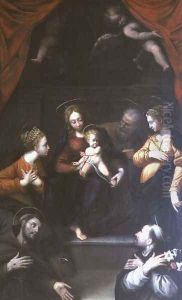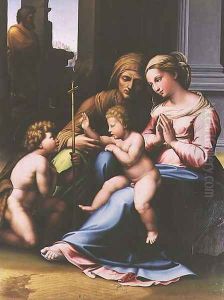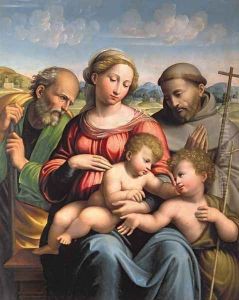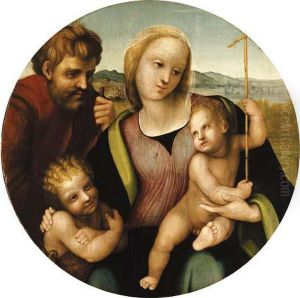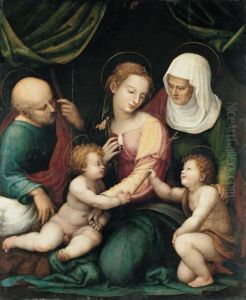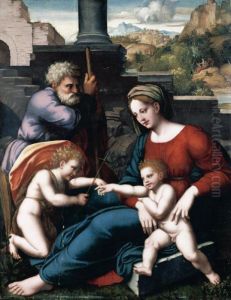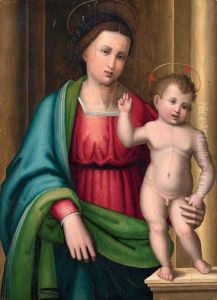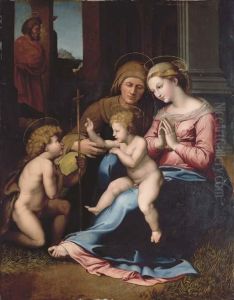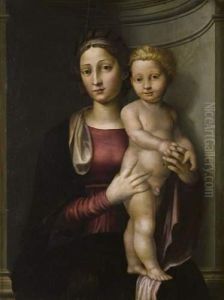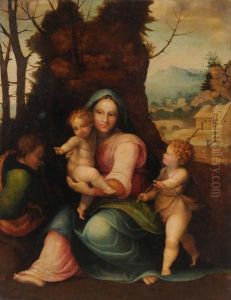da Imola (Francucci) Paintings
Innocenzo di Pietro Francucci da Imola, commonly known as Innocenzo da Imola, was an Italian painter and draftsman active during the High Renaissance. Born in 1494 in Imola, a town in the Emilia-Romagna region of Italy, Innocenzo was a notable artist of his time, although not as widely recognized today as some of his contemporaries. He initially trained under Francesco Francia in Bologna, which significantly influenced his early style. His work is characterized by its delicate coloring, graceful figures, and detailed landscapes, often imbued with a serene, harmonious quality.
Innocenzo's career took a significant turn when he moved to Rome, where he came under the influence of Raphael, one of the era's most celebrated artists. While in Rome, Innocenzo absorbed the grandeur and grace of Raphael's style, which would profoundly affect his subsequent work. Despite this influence, Innocenzo managed to retain a certain personal flair in his paintings, which often depicted religious scenes and were marked by their clarity, precision, and tranquil beauty.
Throughout his career, Innocenzo executed several notable commissions, including works for churches in Imola and Bologna, as well as for private patrons. His altarpieces and frescoes demonstrate a mastery of composition and an ability to convey narrative and emotion through visual means. However, despite his talents and contributions to the Italian Renaissance, Innocenzo da Imola remains somewhat overshadowed by the era's more famous figures.
Innocenzo's legacy is preserved in various Italian museums and churches, where his works continue to be studied and admired for their elegance and refinement. He died in 1540, leaving behind a body of work that, while not as extensive as some of his peers, reflects the artistic vibrancy and intellectual ferment of the Renaissance period.
